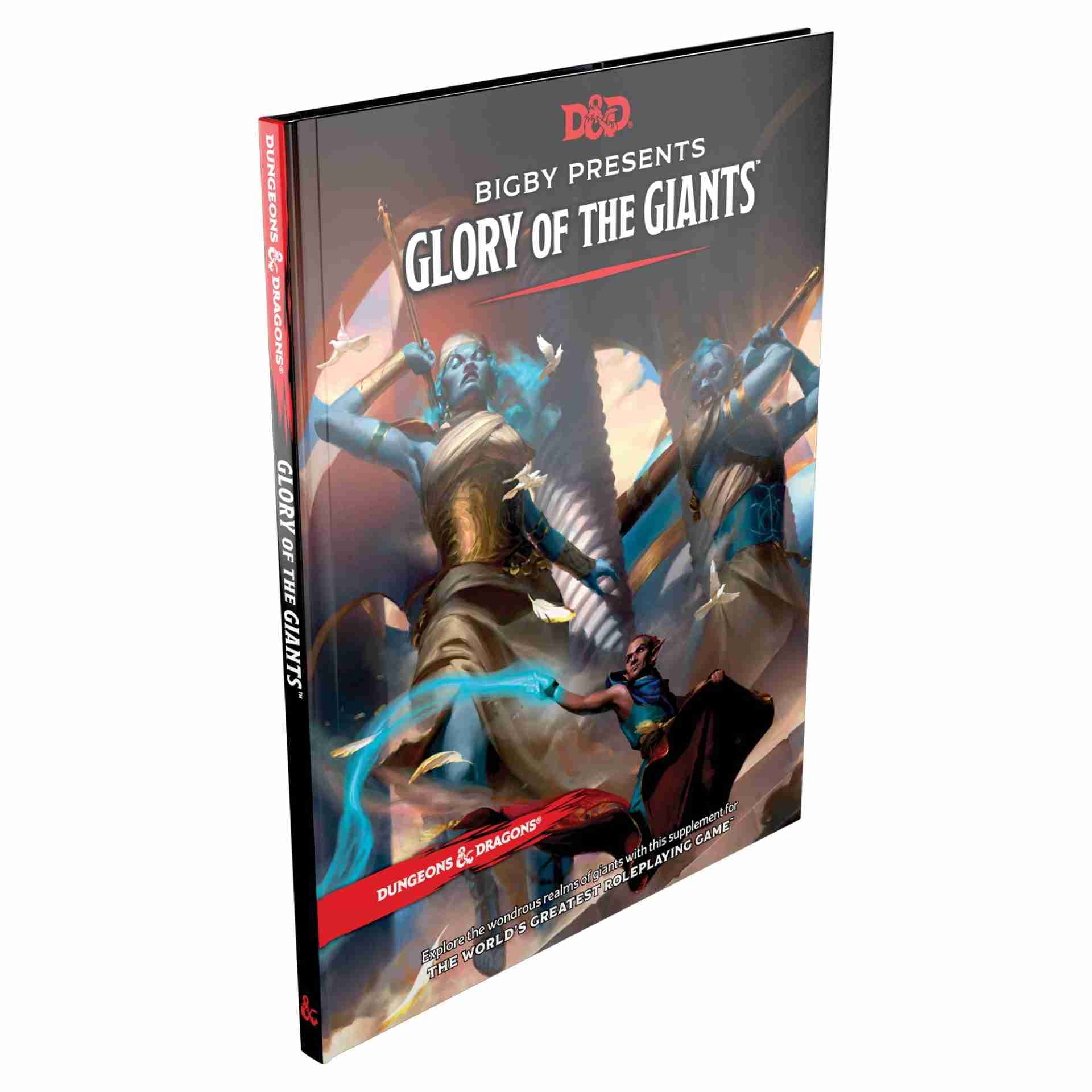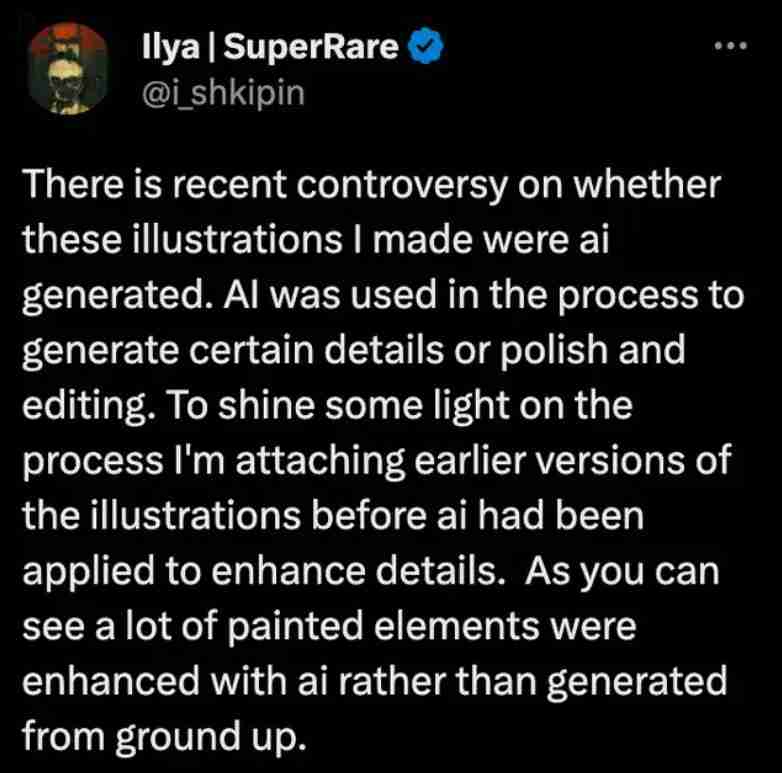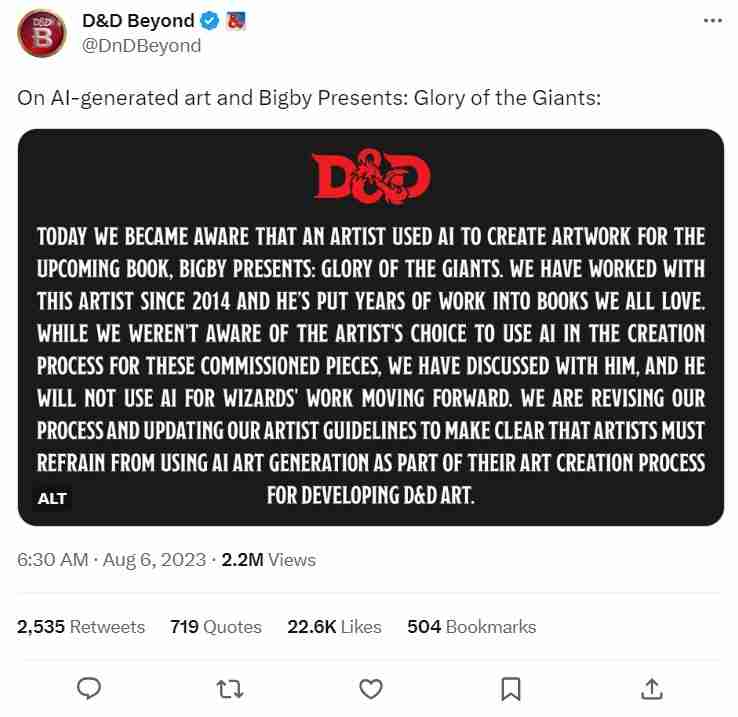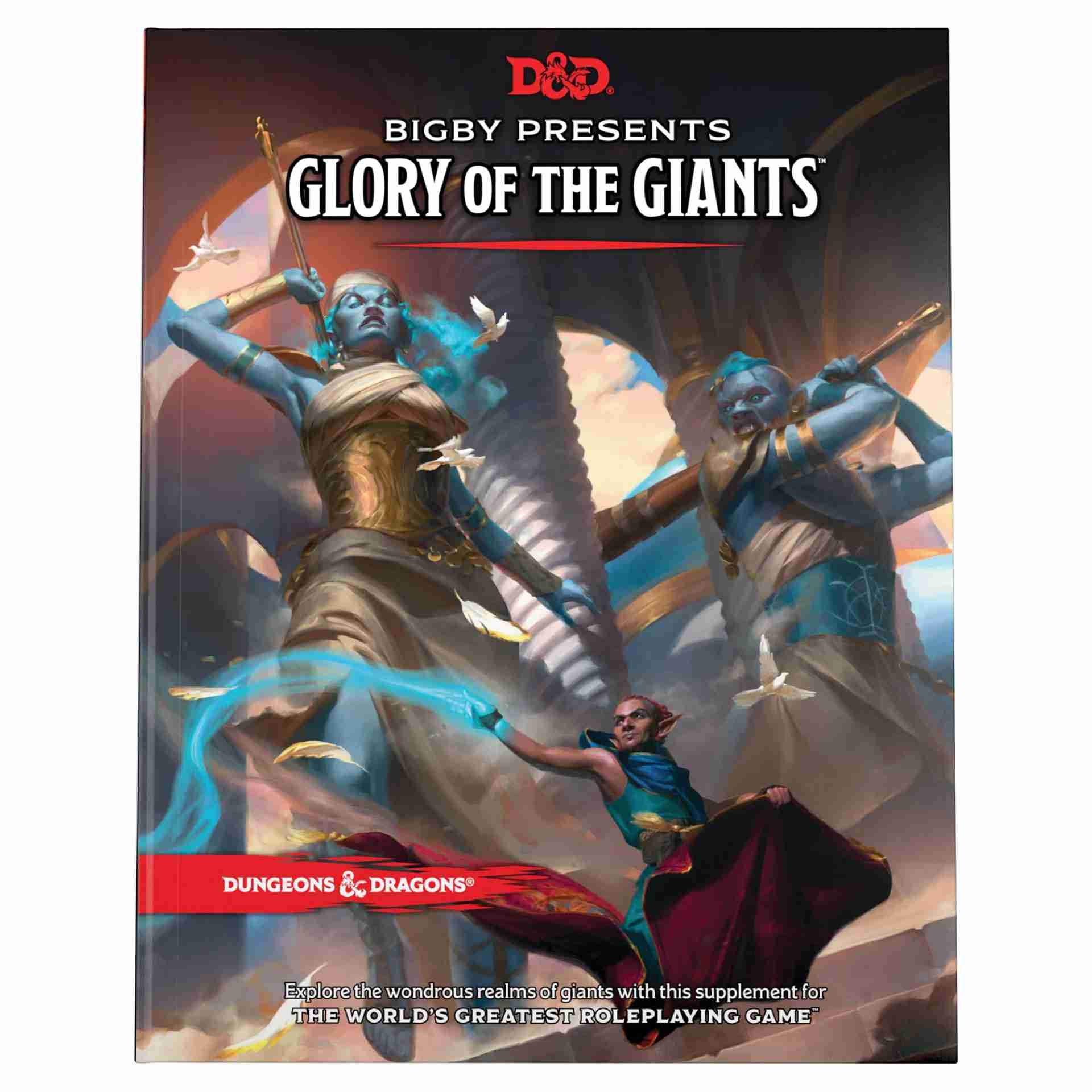Introduction:
The realm of tabletop gaming is no stranger to innovation, but a recent revelation has sent shockwaves through the Dungeons & Dragons (D&D) community. The eagerly anticipated book, “Bigby Presents: Glory of the Giants,” holds a surprising secret within its pages – artwork generated by artificial intelligence (AI). This unexpected discovery has ignited debates about the intersection of technology and creativity, raising questions about artistic integrity and the future of tabletop role-playing games. In this blog post, we delve into the controversy surrounding AI-produced artwork in D&D’s latest release and explore its implications for the gaming world.
Quick Summary:
The unveiling of AI-generated artwork in Dungeons & Dragons upcoming book, “Bigby Presents: Glory of the Giants,” has ignited a passionate debate within the gaming community. Artist Ilya Shkipin’s revelation that AI was used to enhance specific details in the artwork, rather than generating entire pieces, has raised questions about the intersection of technology and artistic integrity.
The controversy has prompted discussions about transparency, collaboration, and the role of AI in creative processes. While Wizards of the Coast responded by pledging to cease AI usage and update its artist guidelines, the incident continues to spark broader conversations about the future of AI in tabletop gaming and its impact on traditional artistic practices. As the gaming community grapples with these complexities, the legacy of this controversy will undoubtedly shape the way technology and art intersect in the world of Dungeons & Dragons and beyond.
AI Art Revolution in Dungeons & Dragons: Delving into Bigby Presents: Glory of the Giants

The unveiling of AI-produced artwork in “Bigby Presents: Glory of the Giants” left many fans and enthusiasts surprised and intrigued. Ilya Shkipin, an artist contributing to the book, revealed on social media that AI technology was used to enhance specific elements of the artwork, rather than generating entire pieces from scratch. This admission sparked a fervent response from the D&D community and initiated discussions about the role of AI in creative processes.

Shkipin clarified that the AI was employed to add “certain details or polish and editing” to painted elements within the artwork. While the exact extent of AI involvement remains to be fully understood, the revelation has raised ethical questions about transparency and disclosure. Fans and critics alike have questioned whether the integration of AI aligns with the spirit of artistic expression that D&D is known for.
Uncovering the Unseen: Dungeons & Dragons, AI Art, and April Prime’s Perspective
As news of AI-enhanced artwork spread, artist April Prime, whose concept art formed the basis for the AI-generated images, expressed her disappointment and dissatisfaction. Prime, who was hired by Wizards of the Coast as a concept artist in 2022, revealed on social media that she was unaware of the AI usage and was deeply unhappy about its inclusion in the book. This sentiment was echoed by others in the creative community, who raised concerns about the potential impact on traditional artistic practices and collaboration.
The unintended consequences of this revelation extend beyond the immediate backlash. Fans who eagerly awaited the release of “Bigby Presents: Glory of the Giants” found themselves grappling with the implications of AI art in their beloved game. This raises questions about the balance between innovation and tradition, and how the gaming community can navigate the evolving landscape of technology and creativity.
Navigating AI’s Role in Dungeons & Dragons: Wizards of the Coast’s Response to AI Art in Bigby Presents: Glory of the Giants

In response to the mounting concerns, Wizards of the Coast issued a statement acknowledging that it had learned about the AI-generated artwork at the same time as the community did. The company stated that it had discussed the matter with Shkipin and confirmed that AI would no longer be used for Wizards’ projects moving forward. Additionally, Wizards of the Coast announced its intention to update its artist guidelines, clarifying that artists must refrain from using AI art generation in the development of D&D products.
This response indicates Wizards of the Coast’s commitment to maintaining the artistic integrity and authenticity that the D&D franchise is known for. However, the incident has ignited broader discussions about the future of AI in creative processes, both within the gaming industry and beyond.
The Intersection of Art and Technology in the World of D&D:
As the dust settles on the controversy surrounding AI-produced artwork in “Bigby Presents: Glory of the Giants,” the gaming community finds itself at a crossroads. The clash between tradition and innovation, authenticity and technological advancement, has highlighted the complex relationship between art and technology within the realm of Dungeons & Dragons.
In an era where AI’s capabilities continue to evolve, D&D enthusiasts, artists, and game developers face important decisions about the role of technology in creative endeavors. The incident serves as a reminder that while AI can enhance certain aspects of the creative process, it must be approached with careful consideration to preserve the essence of the art form.
As “Bigby Presents: Glory of the Giants” prepares for its release, the legacy of this controversy will linger, inviting ongoing conversations about the boundaries, ethics, and possibilities of AI in tabletop gaming.
Read also our article “Generative AI in Action: Impacting Industries with Creative Technology“.
FAQ:
Q1: What exactly is AI-generated artwork?
AI-generated artwork refers to visual creations produced with the assistance of artificial intelligence technology. In the case of “Bigby Presents: Glory of the Giants,” certain details and enhancements within the artwork were created using AI algorithms.
Q2: How did the D&D community react to the revelation of AI-produced art?
The D&D community exhibited a range of responses, from curiosity to concern. Many fans expressed disappointment, as the inclusion of AI in the artistic process raised questions about the authenticity and integrity of the game’s visuals.
Q3: How does Wizards of the Coast plan to address AI usage in its future projects?
Wizards of the Coast has indicated that AI will no longer be used for its projects, and it plans to update its artist guidelines to explicitly prohibit the use of AI art generation. This reflects the company’s commitment to maintaining artistic authenticity.
Q4: Will the AI-enhanced artwork be reworked for the book’s release?
Ilya Shkipin, the artist involved, mentioned that the illustrations would be reworked. However, the exact details of the rework and whether it will affect the initial print copies remain unclear.
Q5: How might this incident influence the future development of Dungeons & Dragons and similar games?
This incident serves as a case study for game developers to carefully consider the implementation of AI in their creative processes. It may lead to more thoughtful approaches to technology, ensuring that it aligns with the values and expectations of the gaming community.
